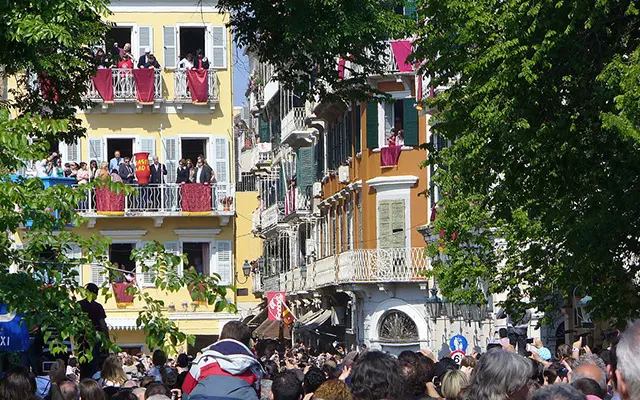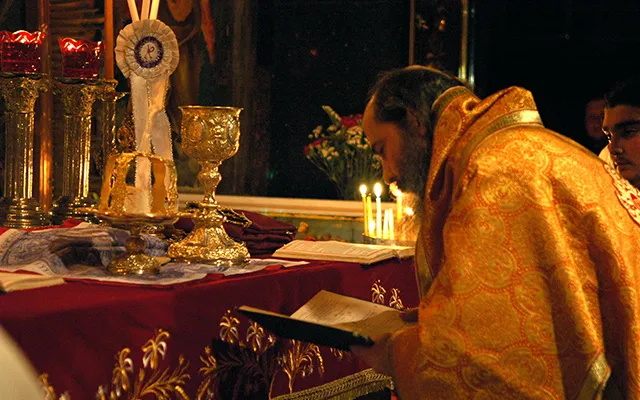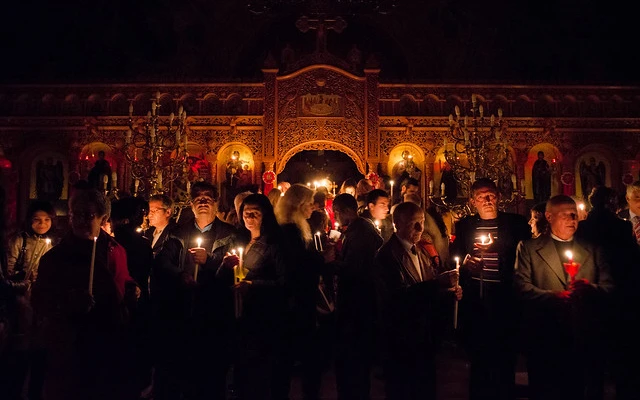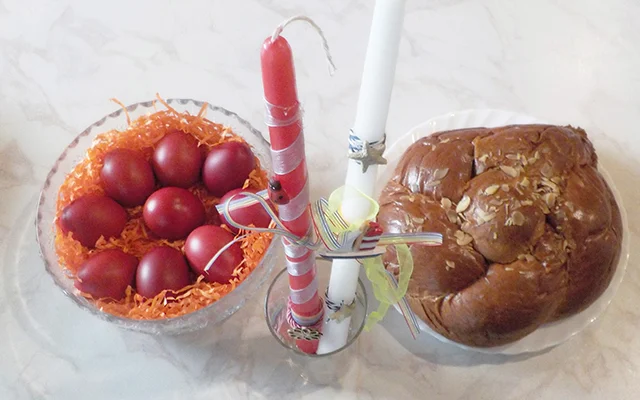Greek Easter Holy Week through its' rituals
Immerse into the deep spiritual notion of the rituals and religious processions followed in Greek Orthodox Church during the Great Week.
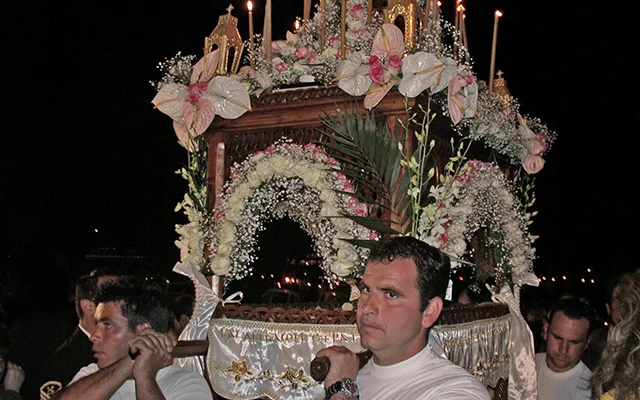
Prior to Pascha
The Great Lent (or Great Fast)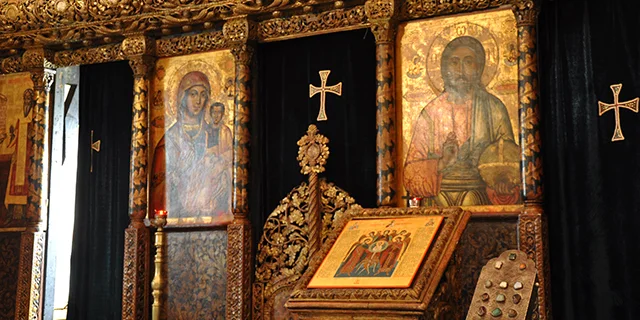
Typically, the Easter period (Pascha) starts for the Eastern Orthodox Church at the beginning of the Great Lent (Greek: Μεγάλη Τεσσαρακοστή). This season starts with the Clean or Ash Monday (Greek: Καθαρά Δευτέρα) and it lasts for 40 days. The Great Lent signifies a preparatory period where the faithful focus into the deeper meaning deriving from the Passion and Resurrection of Jesus Christ. A series of masses, prayers and fasting manners promote a spiritual uplifting, the purification as well as the enlightenment of mind and body in receiving the divine message of God through his Son. All this state refers to the major implication of the celebration that is the liberation of people’s souls and bodies from sin.
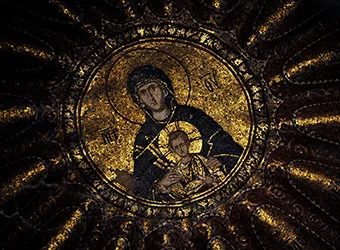
Some of the most significant church masses of the Great Lent take place on the first 5 Fridays of this 40-day period. The masses are called Cheretismi (Greek: Χαιρετισμοί) and they are dedicated to the Virgin Mary, mother of Jesus.
The chant that dominates these services is the Akathist Hymn that, as described by its name, all believers are expected to remain standing as they hear it. While approaching the Holy Week, the church services are becoming more frequent and the celebration mode is becoming more apparent to different aspects of social life through a series of customs that are followed.
Fasting is a fundamental element of the Great Lent and generally has a prominent role in the Orthodox perspective which is influenced by the long history of the Byzantine monastic rules. Today, many Greeks try to follow the requirements and commandments of the Great Fast but the demanding pace of the contemporary way of life puts some obvious barriers. The faithful are encouraged to abstain from meat, animal products, dairy, fish, eggs and sometimes even olive oil. Some of the abstentions are lifted during some special days of Lent, while on Wednesdays and Fridays many believers sustain only on bread, fruits, and vegetables.
Entering the Holy (Great) Week
Palm Sunday
In the Greek Orthodox Church, the Holy Week is called Great Week (Greek: Μεγάλη Εβδομάδα). Its name implicates the great significance of the events that they are related to God's message to humanity. It commemorates the culmination of Christ’s Passion until the redeeming event of his resurrection. The Great Week starts on the Palm Sunday and ends on the Great Saturday. It is characterized by the strict fasting commandments and by the long church services. The faithful are encouraged to observe the deeper meaning of the commemorated incidents and immerse into the somber status of the occasion.
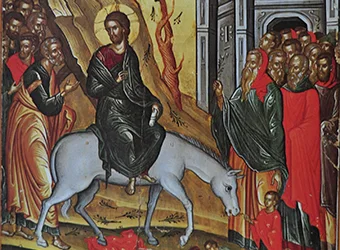
Palm Sunday initiates the narrative of Christ’s Passion. The day commemorates Jesus’ triumphal entry into Jerusalem when according to Gospel descriptions the Jewish inhabitants welcomed him with great excitement laying down their cloaks as well as small branches of palms.
The morning mass, that is taking place on Palm Sunday in all Greek Orthodox churches, includes a vivid representation of this incident since the priest goes around each corridor of the church and throw bay leaves. Those leaves that are distributed on the floor correspond to the palm leaves laid by the Jews when Jesus entered Jerusalem. After the end of the Divine Service, the faithful are used to collect some of the distributed bay leaves and take them to their homes for a blessing. Due to the great significance of this feast, the long fast is interrupted and the traditional meal of the day includes fish dishes. Every type of fish can be a potential choice but in many areas, the most typical is to cook cod on Palm Sunday.
The pace of liturgical services during the Great Week
Great Monday, Great Tuesday, Great Wednesday
According to the Greek Orthodox tradition, someone refers to the first three weekdays of the Holy (Great) Week putting the adjective Great in front of the name of the day. The main church services are taking place during the evening and they are dedicated to incidents related to Jesus' life as well as to those of the short period before his crucifixion. Another interesting fact is that the evening Devine Services of the Great Week (starting from the evening of Palm Sunday) observe the events of the following day.
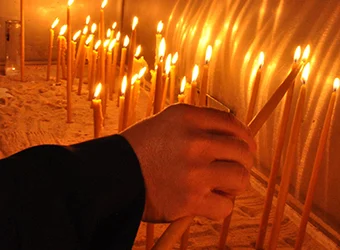
Great Monday that liturgically begins on the evening of Palm Sunday is dedicated to “Joseph the Pangalos” Jacob’s son and commemorates the withering of the fruitless fig tree, one of Christ’s miracles that symbolizes the final judgment for those who do not produce the fruits of repentance.
The observance of the Great Tuesday begins during the preceding evening with the Sequence of the Bridegroom. On this day, the church commemorates the Parable of the Ten Virgins and based on Holy Gospel references, observes Jesus’ grievous complaint against the religious leaders of Israel.
Great Wednesday celebration begins also on Great Tuesday evening when the Hymn of Kassiani is sung. The hymn refers to the sinful woman who anoints Jesus before his Burial. The mass of the day is called Presanctified Liturgy and the faithful are encouraged to attend it at the church of their parish.
The culmination of Christ’s Passion
Great Thursday, Great Friday, Great Saturday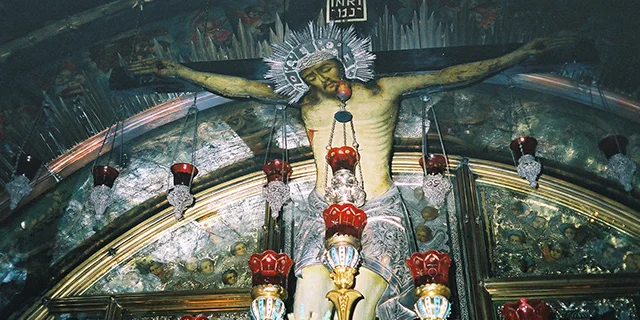
During the second half of the Great Week, the narrative of Christ’s Passion comes to a climax. The devout worshiping is obvious through a series of vigorous and stunning rituals taking place in Greek Orthodox churches and parishes. Due to the official public holiday starting from Great Friday, and in combination with the spring vibes of the Greek nature, many people visit small villages and monasteries in rural areas where they observe the feast. A deep religious sentiment dominates each corner of the country, while the followed rituals offer a unique spiritual experience to everyone who decides to visit an Orthodox church during those days.
The ecclesiastical observance of the events related to the Great Thursday begins with the evening church service of the previous day. There, the corresponding gospels refer to the Last Supper, the Last Prayer of Jesus on the Mount of Olives, the betrayal of Jesus discipline Judas the Iscariot as well as the Holy Basin. The faithful are flooding the churches where after the Holy Communion, a representation of the Holy Basin conducted by Jesus to his disciplines is taking place. The priest or the Bishop is washing the feet of twelve monks or faithful as part of a unique ritual that commemorates Jesus’ action that implicates humility.
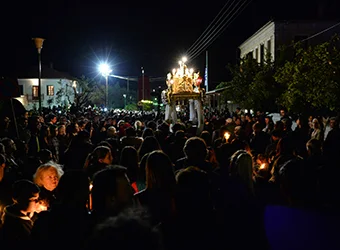
The Great Friday is the definition of mourning occasion for the Orthodox Church and for all Christianity. It is a day when the Divine Drama culminates with the Crucifixion and the burial of Jesus Christ. Following the Byzantine Christian rite, the observance of the day starts on the evening of Great Thursday with the Matins of the Twelve Passion Gospels. Each one of the twelve gospels refers to events of Christ’s Passion, Crucifixion, and burial while when they are read by the priest all the faithful in the church are standing, holding lit candles. At the end of the night liturgy, the cross with the crucified savior is placed at the center of the church.
The Matin of the Great Saturday refers to Jesus' burial after the Crucifixion. The event is observed in the evening of the previous day when after a long liturgy each parish holds the Epitaphios procession which is a form of a funeral service for Jesus Christ. The Epitaphios that is taken up and carried outside the church, is a wooden structure that contains an embroidered icon of Jesus prepared for burial. The faithful hold lit candles and follow the procession along the streets of the parish. The mourning chants, the candles, and the evening darkness, compose an atmosphere of apocalyptic spirituality that offers a unique notion to the ritual.
In the early evening, many Greek Orthodox Churches observe the Divine Liturgy of St. Basil the Great which is called “The First Resurrection”. At this liturgy which is the longest and latest of the entire year, the priests scatter bay leaves in the church and the faithful made noise by knocking the chairs of the church. This tradition symbolizes the smashed chains and gates of hell and the victory of Jesus over death.
The triumphant event of Christ’s resurrection
Easter Sunday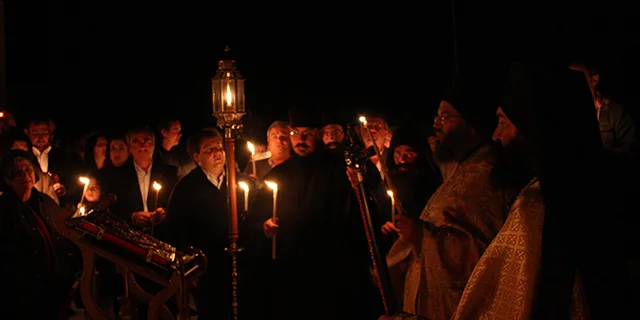
The absolute day of enjoyment and fulfillment of the Easter period is the Easter Sunday. For the Orthodox Church, Christ’s Resurrection is considered as the fundamental incident of God’s message to humanity. This day is related to extremely festive ceremonies and rituals characterized by devoutness and spirituality.
Easter vigil
On Great Saturday night around 23:00 the faithful heading to the church of their parish. It is the time to attend the most important Divine Service of the year, the official celebration of the Resurrection of Jesus. It is not an exaggeration to say that the whole community, especially in smaller and rural areas, gathers in the church.
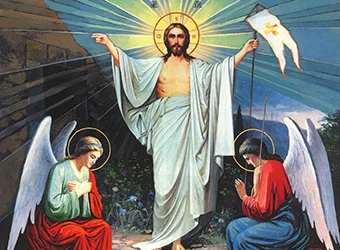
Some minutes before midnight all the lights of the church (apart from the unsleeping flame of the altar) are shut off and everyone goes out at the churchyard with prayers anticipating the cheerful event. At midnight sharp the bells start ringing on an ecstatic mode, while the leading priest announces the thrilling event of Christ’s Resurrection. He distributes the Holy Flame (which typically arrives from the Church of the Holy Sepulchre in Jerusalem) and announces the Resurrection message “Christos Anesti” (Greek: Χριστός Ανέστη, -Christ is risen-). The faithful receive the Holy Flame to their lit candles and acknowledge the wonder saying “Alithos Anesti” (Greek: Αληθώς Ανέστη” -Indeed He has risen”).
The ritual continues in the church with the Easter vigil, while the service typically finishes around 2 or 3 o’clock in the morning. People try keeping the Holy Flame during the whole Divine Service and they return with this to their homes as they consider it a blessing.
On Easter Sunday, the morning a Divine Service that is taking place attracts numerous faithful. The liturgical tradition commemorates the Resurrection for 40 days after Easter day. In the same way, the main greeting among the people is “Christos Anesti” (=Christ has risen) while the typical answer is “Alithos Anesti” (=Indeed He has risen). A Divine Service is also taking place on Easter Monday which is the final official public holiday during the Easter period in Greece.
